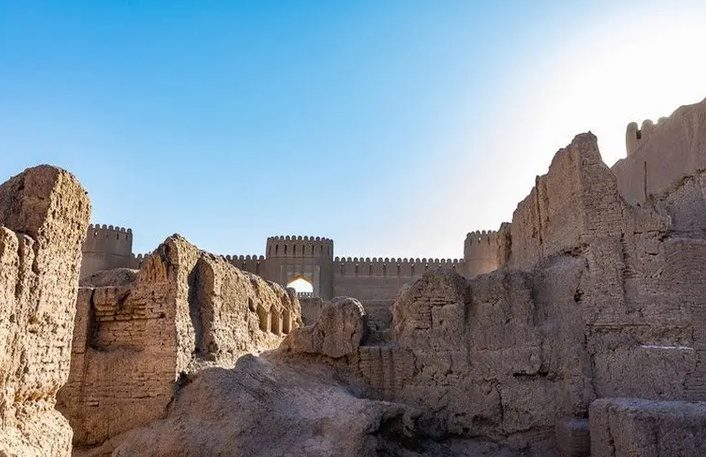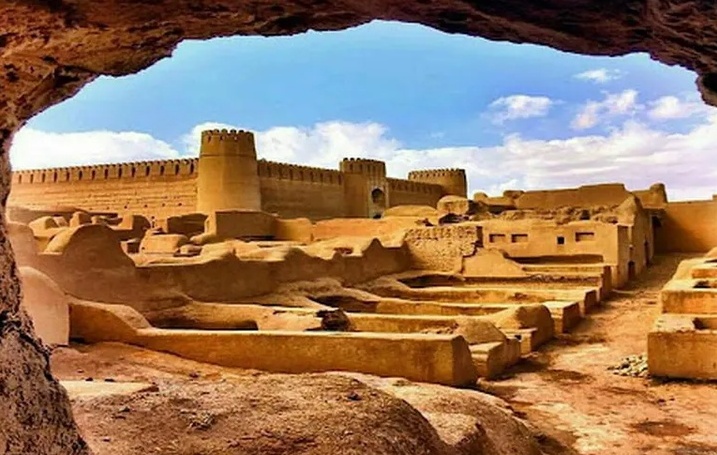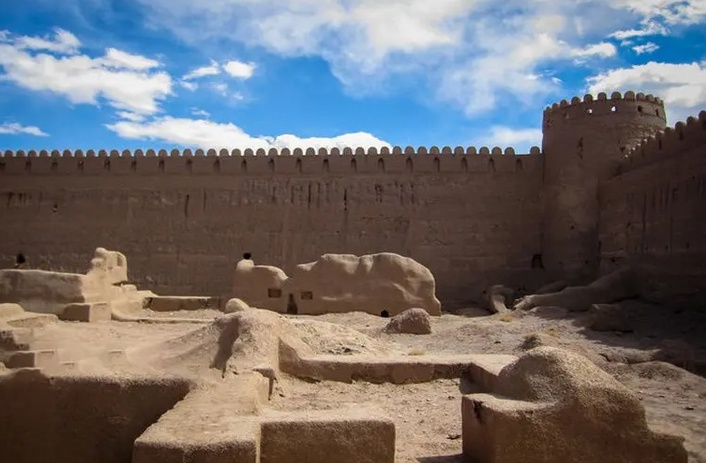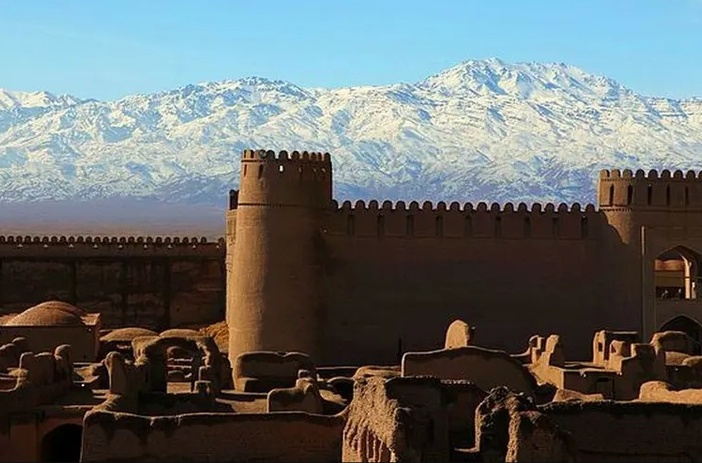SAEDNEWS: What Secrets Lie Behind the Narrow Alleys of Rayen Citadel?
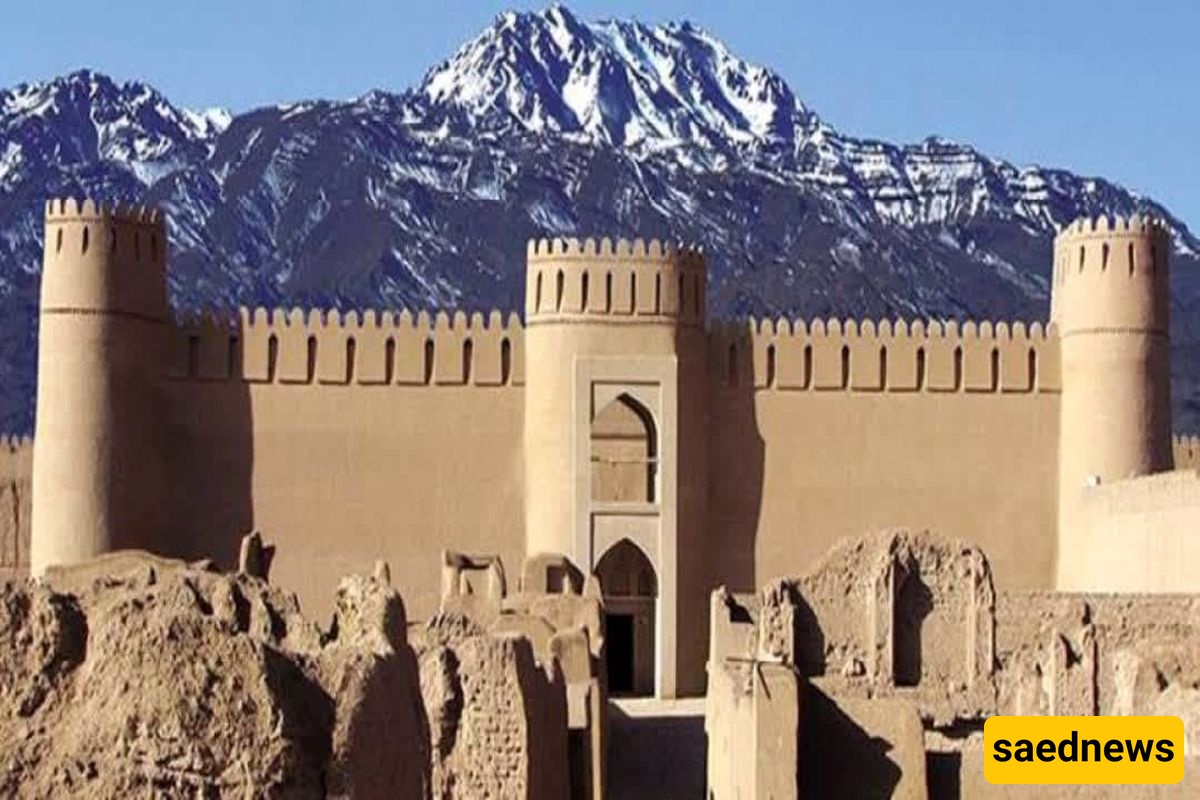
Imagine living in a busy and bustling town that is itself part of a larger city. You obtain all your necessities within that very town, and your movements usually end within its streets. A land within another land. This was the first image that came to my mind about the Rayen Citadel in Kerman. Rayen Citadel can also be considered a city within the city of Rayen—a neighborhood with alleys, a bazaar, a fire temple, accommodation for caravans or a warehouse, and so on, which in ancient times was a place for people of different social classes in Rayen to live.
One of the tourist attractions in Kerman is Rayen Citadel. This citadel takes its name from the city in which it is located. Some think that the two words “Rah” (way) and “In” make up the name Rayen. In the dictionary, “Rayen” refers to a qanat (underground water channel) with a gentle slope. But I prefer this last interpretation over all others. The name of this citadel, like all its other parts, should be intertwined with history.
Another narrative says that the citadel and the city of Rayen got their names from a soldier named “Rayin” during the era of Ardashir II. Perhaps the history of that period witnessed many stories and heroic acts of soldier Rayin, and people considered his name worthy of this impregnable fortress.
Of course, Rayen Citadel in Kerman is also known as Mirza Hossein Khani Citadel, because it was the command center of Mirza Hossein Khan during the Zand period and later passed into the hands of his son and descendants. Due to the great popularity of Mirza Hossein Khan, this citadel is also known by his name.
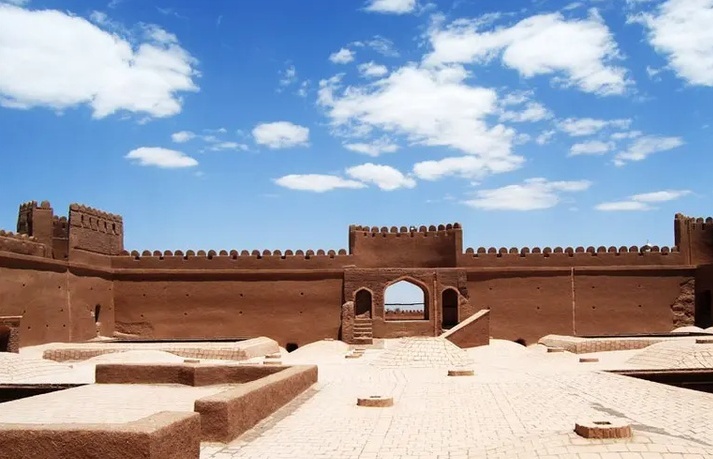

There are different speculations regarding the construction time of Rayen Citadel. For example, among historical writings, the name of this fortress first appears in the first year of the Islamic calendar, but if we turn the pages of history, we read different stories. The unique Rayen fortress rises during the Sassanid kingship—a strong citadel probably initially built to protect the commercial highway of Rayen city. Today, Rayen Citadel in Kerman is known as the second largest adobe structure in the world.
According to some accounts, Rayen existed during the era of Yazdegerd III. Precisely during these days, Arabs were entering our borders, and the strong fortresses of Rayen Citadel delivered a great lesson to the Arab army commander, Mashajeh ibn Masoud. Perhaps no one imagined that after conquering small and large lands, a semi-military town in the heart of the thousand mountains could change the outcome of the struggle.
Of course, this exemplary resistance of the people of the citadel was not only seen during the era of Yazdegerd III. Just take a stroll through the alleys of Kerman’s history to the year 6 AH; Bahram Shah was fighting around Rayen fortress with Malek Arsalan when the people of the citadel joined the fight, and the Rayenis, who supported Malek Arsalan, ended the battle in his favor.
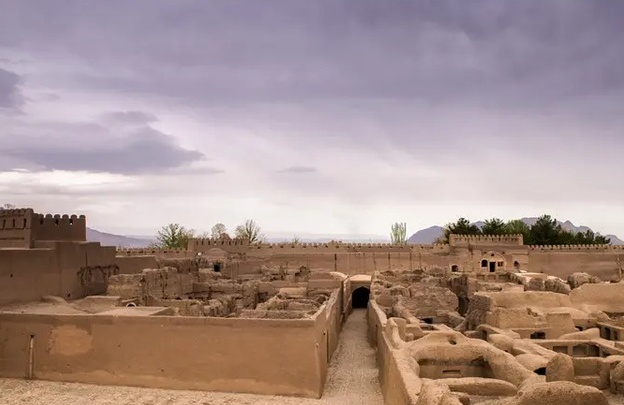
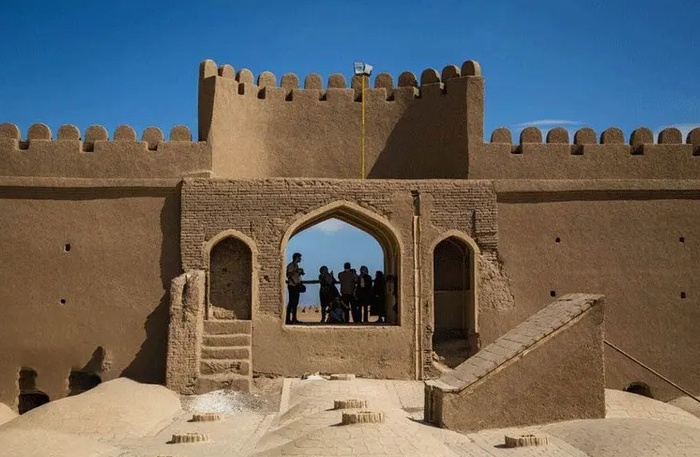
Maintaining a clay structure like this citadel, with a history of a thousand years, certainly requires a great deal of knowledge and expertise. Restoration workers began the latest reconstruction of the Rayen structure in 1995. Of course, this clay town has been rebuilt in previous royal dynasties. Even documents show that half a century ago, the citadel you now see was actually built on top of the previous structure. Perhaps the famous and disastrous Bam earthquake, which destroyed the Bam Citadel, led to greater care for this beautiful citadel and other historical sites in Iran.
Today, various sections of Rayen Citadel in Kerman have been revived. If you visit this historical town, you can see areas such as the bazaar, fire temple, governor’s quarters, and more. One interesting fact about Rayen is that up until 150 years ago, this famous town was still a habitable area, with around five thousand people living there.
For a structure with a thousand-year history, the past 150 years can be considered contemporary history. It feels so close to human life that it seems you could have rented one of its commoners’ or aristocrats’ houses for residence just a year ago.
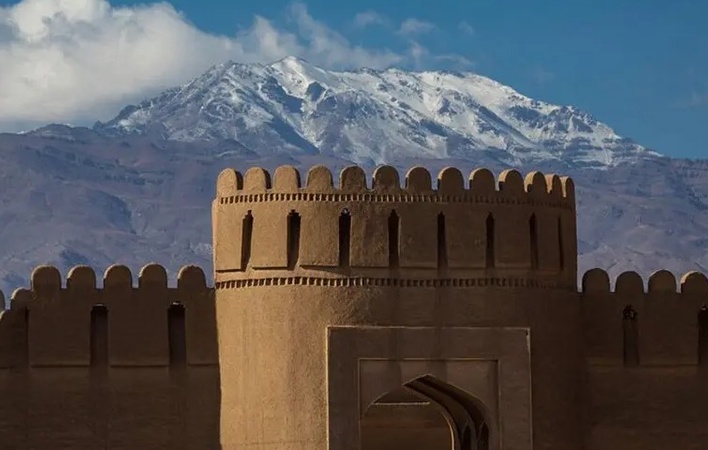
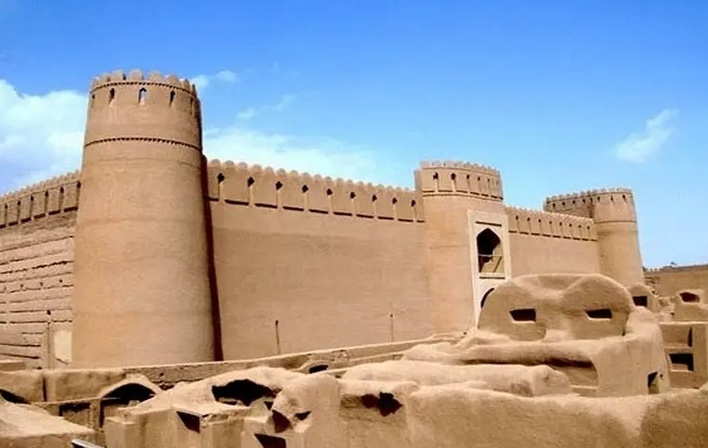
Sixteen watchtowers were designed for surveillance and protection of Rayen Citadel in Kerman. Twelve towers along four sides of the walls, each over ten meters long, cover the outer perimeter of the towers. The other four towers are inside the citadel, surrounding the palace area. The structure of the towers is such that all of them have two floors. Stairs connect them to one another. The sixteenth tower is considered the main tower, where all reports from the other observation towers are communicated.
With these descriptions, you have certainly realized that you are facing a military and impregnable city. So it is no surprise if I say this clay city, with 27,000 square meters of built-up area, has only one entrance, which is on the eastern side. Of course, Rayen’s security measures do not end there; in certain parts of the citadel, moats were dug to slow down enemy movement, which also help to direct water and prevent floods. Looking at the top of the walls, you can see battlements designed for shooting.
The entrance gate has two floors. The second floor has openings facing the ground to control the movement of ordinary people, soldiers, and any other creature. In case of an enemy attack and breach of the defenses from the walls, the ruling soldiers pour molten lead from these same openings onto the enemies entering the citadel.
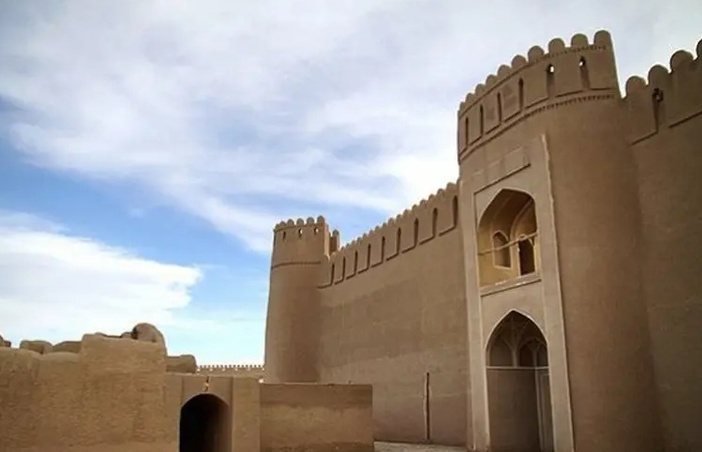
Now it is better to move a little away from the military atmosphere of Rayen Citadel in Kerman and begin our journey inside this historical corridor. Before any explanation, know that Rayen Citadel also did not escape the policy of severe social stratification of the Sassanid era. With its walls and numerous staircases, the common and elite sections are separated from each other.
For example, right at the beginning of the citadel, there is the residence and workplace of various craftsmen; then comes the turn of the commander’s close associates, who live in the elite neighborhood. Finally, the governor’s palace, like a jewel in the middle of this mud-brick ring, displays itself.
This economic difference is reflected in the type of materials used in building the houses. Of course, the categorization of people continues. For example, the residence of merchants is not the same as that of craftsmen, and with this logic, the citadel is divided into different sections.
Upon entering Rayen Citadel, you encounter the blacksmith workshops. Although the remains of shops producing weapons and other iron items like sickles and locks date back to ancient times, blacksmithing and knife-making still continue in some of these workshops. Rayen Citadel in Kerman is divided into three main parts: the commoners’ section, the elite section, and the governor’s section.
After the entrance gate, you see the bazaar, which continues to a square. This square was used to communicate news to the people. The governor’s pavilion, or the citadel’s ruler’s section, stands out in the center of the fortress with an elegant octagonal structure. Since Rayen is considered a well-equipped and complete town, it contained many facilities within itself. From stables, warehouses, and docks to temporary and permanent fire temples, all were located inside this massive mud-brick structure.
In any case, no matter how much we try to move away from describing the citadel’s security and military advantages, traces of them are still evident in the corners of this large structure. For example, upon entering Rayen Citadel, you notice the narrow streets. Each street is two meters wide or less. This architecture not only keeps the air cool inside the historic town of Rayen but also slows down the enemy’s movement toward its center, i.e., the ruler’s section, if the citadel is captured.
You may also wonder, if despite all these defenses the citadel is conquered, what will happen to the people inside? There is no need to worry about the imaginary inhabitants! In case of any problem, they must reach the governor’s palace. The escape route from the citadel is located there. This route is divided into three parts: one leads to the rooftop of the governor’s section, one to one of the towers and then outside, and one goes directly outside the citadel.
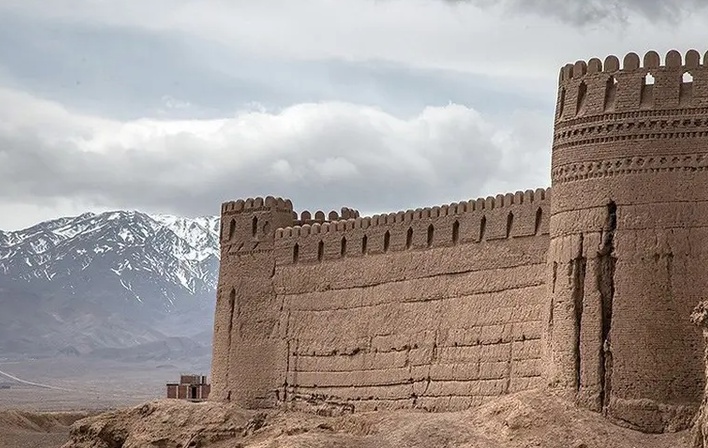
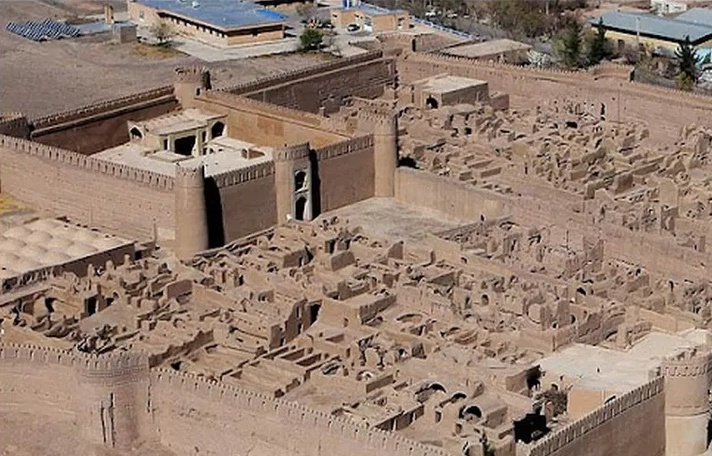
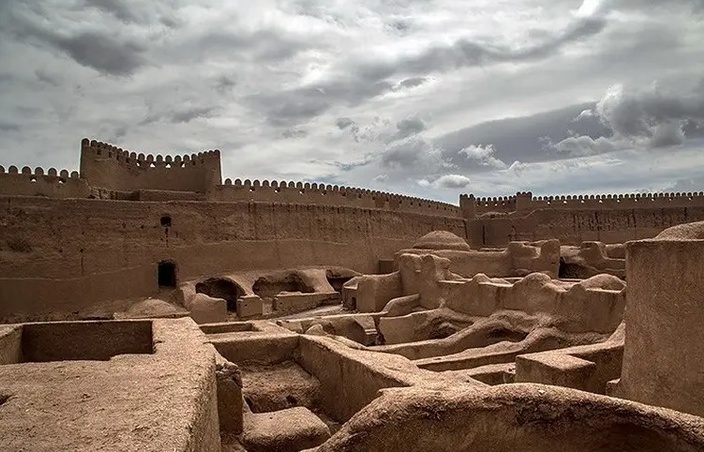
When it comes to Bam Citadel, the story goes back to about 500 years before Christ. Yes, you read that correctly; Bam Citadel has a long and ancient history. Bam Citadel is several times larger than Rayen Citadel in Kerman. Just take a look at the photos of this fortress before the 2003 Kerman earthquake to understand its grandeur and beauty. Rayen Citadel, as the younger sister of Bam Citadel, is about 1,500 years old or more. However, historically, compared to Bam Citadel, it is considered one of the relatively newer fortresses.

To see Rayen Castle, you must first experience a trip to Kerman, the city of mud-brick castles. Rayen is located in a city of the same name in the southwest of Kerman. The castle is situated southwest of Rayen, shining with an indomitable face among the Hezar Mountains. Rayen Citadel is about one hundred kilometers away from Kerman, and tourists can reach it via the Kerman–Jiroft road or the Kerman–Bam road.
In general, for visiting historical sites located in desert cities like Kerman, it is not recommended to choose the winter and summer seasons. The dry desert climate makes the cold even harsher and the heat more intense. However, Rayen Citadel in Kerman is located at an elevation, and its pleasant weather leaves the way open for travel at any time.
If you choose the Kerman–Bam road to reach Rayen Citadel, you will need to drive about 80 kilometers before arriving at the Rayen exit. From there, you must head toward this exit and continue driving to the foothills of Hezar Mountain. Another way is via the Kerman–Jiroft road, which, after nearly 100 kilometers of driving, will also lead you to the Rayen route.
